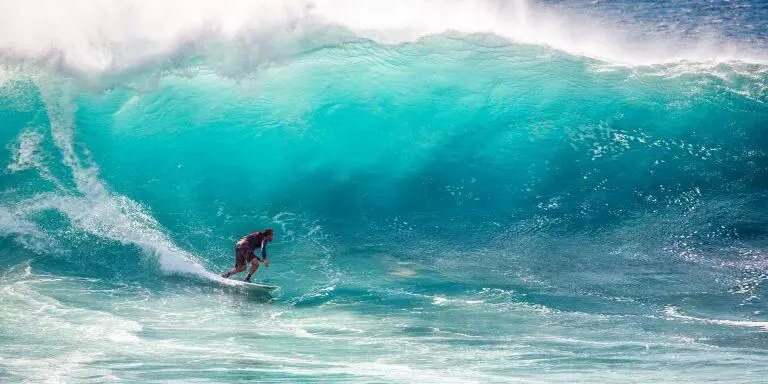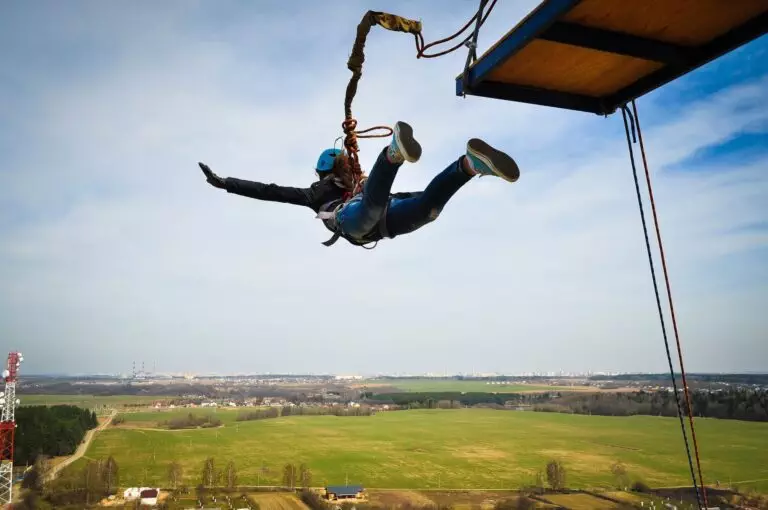Few activities are as exhilarating or rewarding as surfing. Those who regularly ride the waves will tell you that the focus, joy, and sense of peace they experience are unmatched.
Since its modern-day origins, Hawaii has been a mecca for this challenging water sport. Because it’s blessed with consistent swells and warm water throughout the year, the idyllic archipelago boasts a tradition that stretches back centuries. Surfers from around the globe flock to its North and South shores to lose themselves in the beauty and transcendence of the clear, majestic waters.
In recent years, there have been promising signs that surf therapy may be a viable means of treating a variety of mental health issues, including substance use. In a post based on this article, an anonymous author summarized how surfing cured his addiction:
“I was violently addicted to cocaine. A friend of mine implored me to go to the North Shore of Hawaii to check it out and give surfing a try. I immediately fell in love with it. For the two weeks I was there, I never even thought of doing coke. This moment was a big transition in my life and I eventually kicked my addiction and became a professional big wave surfer.”
If you’re in recovery from addiction, surfing could be a powerful addition to your treatment program. Its myriad benefits include better physical health, improved mood, mindfulness, a newfound purpose and community, as well as plenty of feel-good neurochemicals. Who knows? By the end of this article, you may be compelled to take up the challenge, grab your board, and get barreled!
Hawaii’s History of Surfing
You’d be forgiven for thinking that surfing is a modern phenomenon, but while it did gain widespread popularity in the 50s and 60s, the roots of this tradition go back further—much further. Believe it or not, a Polynesian cave painting from the 12th century depicts people riding on waves. In the course of their seafaring, the Polynesians brought surfing to Hawaii, and today the Pacific paradise is considered its true birthplace.
The ancient Hawaiians didn’t just consider surfing a sport but an essential aspect of their religion. The tree choice was of vital importance and religious rituals were practiced during the shaping of the board. These ceremonies served both as protection and to secure their gods’ goodwill.
While everybody surfed (kings, men, women, children) there were stringent rules in place regulating who surfed on which spot. Known as “he’e nalu” in Hawaiian, the ancient islanders saw surfing much as many see it today: an art form requiring balance, strength, and a deep connection with nature.
Tapping Into “Blue Mind”
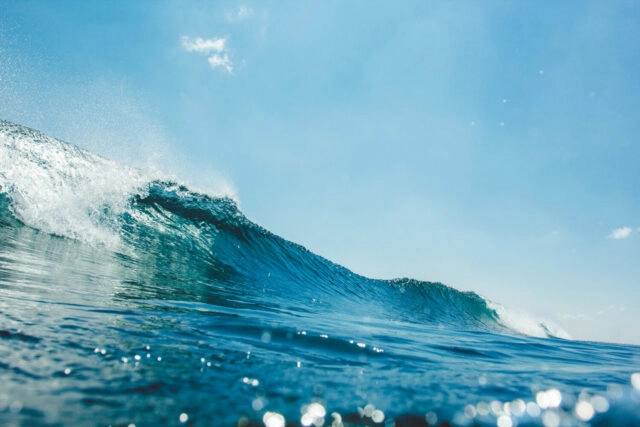
“We are beginning to learn that our brains are hardwired to react positively to water and that being near it can calm and connect us, increase innovation and insight, and even heal what’s broken.”—Dr. Wallace J. Nichols
There’s something inexplicably soothing and meditative about the ocean. Even when taking a saunter by the sea, we can become utterly transfixed by the great, blue-green expanse. Now, what previously was only understood intuitively has been backed up by science.
“Blue Mind” is a term coined by marine biologist and author Dr. Wallace J. Nichols to describe the psychological benefits and feelings of peace and tranquility that are associated with being in or near water, particularly the ocean.
The Blue Mind concept is based on the idea that humans have a deep, innate connection to water, and being close to it can have profound positive effects on our mental and emotional wellbeing. This state is characterized by reduced stress and anxiety, increased feelings of happiness, and an overall sense of calm and relaxation.
Considering it often involves spending hours in the ocean in a kind of symbiosis with the waves, surfing can be a powerful facilitator of the Blue Mind effect. Those in recovery may be suffering from stress, anxiety, or intrusive thoughts, and surfing’s immediate access to Blue Mind serves as an effective antidote.
Surfing and Mindfulness Are Intertwined
“When you see Gerry Lopez there’s this connectivity of tissue with the connectivity of water.”—Shaun Tomson, World Champion Surfer, 1997
Gerry Lopez (also known as “Mr. Pipeline” for his legendary surfing performances at the Pipeline break in Hawaii) is widely acknowledged as a pioneer of the sport. One of the main reasons for his success is his incorporation of mindfulness and yoga into his surfing practice. His unique approach made him an icon in the surfing world, not only for his remarkable skills but also for his calm and composed demeanor in the water.
Gerry Lopez discovered the benefits of yoga early on in his surfing career, and since then, has integrated the practice into his daily life. Lopez realized that yoga and surfing share many similarities, including the need for balance, focus, and mental clarity. He describes the relationship like this:
“You had to be at peace with this wave. You had to have that type of concentration where your mind was steady. For your mind to be still your breath has to be still and to calm the breath your body has to be still. So, a lot of times, you’ll see pictures of me standing really still, well I’m not really still, I’m going like a bat out of hell because the surfboard’s going really fast, but my body is still because I’m trying to still my mind.”
When many people hear the word “mindfulness”, they may think of sitting cross-legged or going for a gentle stroll in the woods. Being in the chaotic grip of a roiling sea isn’t the first thing that springs to mind!
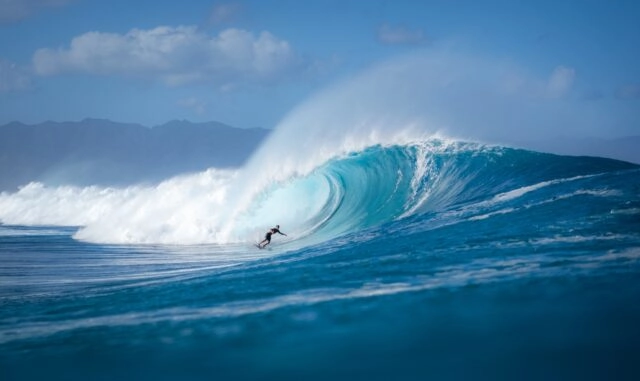
However, surfing as mindfulness should be viewed slightly differently. It doesn’t simply take your focus inward but involves viewing yourself as part of a dynamic environment. Being immersed in water and the movement of the waves, you are constantly active and focused on balance.
Rather than geared towards observing thoughts and reflection, mindful surfing involves moving out of your mind into the world; into a heightened sense of what your immediate environment demands of you. This enables you to develop a ‘body-mindfulness’, viewing yourself as inseparable from the shifting whole.
Overcoming the Challenge
“Surfing is all about uncertainty. That feeling of taking a risk, that leap of faith every time I jump into the ocean, that paddle out among things unseen – all of these make surfing very special.”—Shaun Tomson
Surfing isn’t easy—far from it. For beginners, it has one of the steepest learning curves of all sports. Much like recovering from addiction, becoming skilled at surfing requires dedication, discipline, and community support.
In many ways, surfing is helpful for recovery precisely because it mirrors many aspects of it. Like life, waves are often unpredictable. Wipeouts can hurt, both physically and mentally, but rather than failures, they are stepping stones to finding your sense of harmony.
Building the strength and resilience necessary to handle the physical challenges of surfing is similar to the emotional fortitude required for successful recovery. Surfing demands your total focus and commitment. The effect is that, when engrossed in the swells, cravings can be completely drowned out.
Recovering from a serious addiction alone is near impossible, but mentors and peers often help to lift you out of the darkness. As it is with surfing, where your instructors will guide you and your fellow surfers will encourage you. This sense of community is a crucial component of both, and partly why surf therapy can provide a sturdy foundation for recovery.
Darryl Virostko is a professional big-wave surfer and a living testament to surfing’s power as a recovery tool. The lifestyle brought about by his fame came with an addiction to alcohol and drugs; one he substituted with exercise. Now, he not only surfs but also teaches it to those in recovery. Virostko replaced the high he formerly got from substances with the rush of surfing. Now he teaches this to others, his focus being:
“… to replace addictive drug ‘highs’ with healthy living endorphins.”
Like recovery, learning to surf is a journey; one beset with obstacles to overcome, mentors to gain wisdom from, and dragons to slay. As with all challenging journeys, the rewards that await you have the potential to completely change your life.
A Workout Like No Other!
Whether it’s a healthier body, improved focus, memory, and mood, or better quality sleep, exercising regularly is one of the best things you can do for your health. It’s now universally accepted by experts that there are considerable benefits to regular exercise, as this narrative review concludes:
“There is incontrovertible evidence that regular physical activity contributes to the primary and secondary prevention of several chronic diseases and is associated with a reduced risk of premature death.”
Exercise has also been shown as a way to treat those with substance use disorders. For example, in this study, an exercise program was offered to 38 men and women who used a variety of substances. Participants agreed to take part in group exercises three times a week for two to six months. After being reassessed a year later, five reported abstinence, and ten reported decreasing their substance use.

Surfing isn’t just exercise; it’s an intense full-body workout that requires a high level of strength and cardiovascular endurance. It may take a few sessions (with necessary breaks) before you’re proficient enough to catch a wave, but, over time, you’ll be able to build up the resilience.
Another added bonus is that surfing releases plenty of feel-good neurochemicals (dopamine, serotonin, adrenaline, etc.) that serve as a healthy replacement for the former effects of a drug.
What’s more, rather than aimlessly running on a treadmill for hours on end, you’ll be so caught up in the action of the waves, you may not even realize how much exercise you’re doing. Below are some of the ways surfing works up a sweat:
Paddling
Paddling out to catch a wave primarily works the upper body, engaging muscles in the shoulders, arms, chest, and back. It also requires core strength to maintain balance and stability on the surfboard.
Balance and Core Strength
Once on the board, you rely on your core muscles to maintain balance and execute turns. This involves the abdominal muscles, obliques, lower back, and pelvic muscles.
Lower Body
Standing up on the surfboard and riding a wave requires the engagement of your lower body, including the quadriceps, hamstrings, glutes, and calf muscles. You then use your legs for balance, making adjustments on the board, and absorbing the impact of the wave.
Cardiovascular Fitness
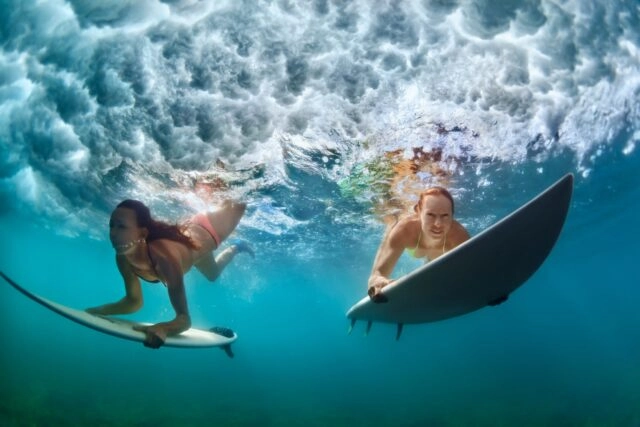
Surfing is also an aerobic activity that can improve cardiovascular fitness. Paddling, catching waves, and recovering from wipeouts all contribute to an increased heart rate and improved endurance over time.
Flexibility and Mobility
Surfing requires flexibility and mobility in various joints, including the shoulders, hips, knees, and ankles. The dynamic movements and continuous adjustments made while riding a wave can help improve overall flexibility and mobility.
Coordination and Agility
Surfing requires coordination and quick reactions to adapt to the constantly changing conditions of the ocean. This aspect of the sport can help improve neuromuscular connections, overall coordination, and agility.
Surf Smart: Precautions to Keep Your Surf Sessions Safe
As we mentioned, surfing isn’t easy, and this is partly due to its potential dangers. Before you paddle out, make sure you’re aware of any hazards and take the necessary precautions to keep your surf sessions both enjoyable and safe. Here are a few things to be mindful of:
Know Your Limits
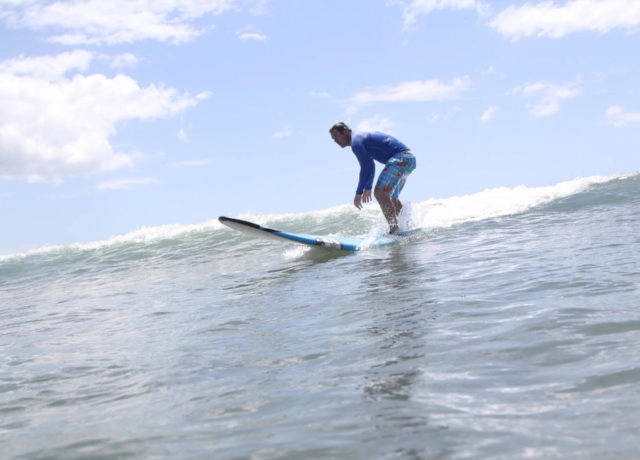
While it can be tempting to tackle a tremendous wave, if you don’t have the experience, this can be extremely dangerous. Be honest with yourself about your skill level and the conditions you’re able to face. If the waves are too big or the currents too strong, don’t push yourself beyond your abilities. Stick to beaches and breaks suitable for your experience, and progress gradually as you gain confidence and skill.
Learn to Swim
As you’ve no doubt guessed, strong swimming skills are essential for surfers. Improve your ability to swim in various conditions and always surf with a buddy, if possible. If you find yourself caught in a rip current, remember to stay calm, conserve your energy, and swim parallel to the shore until you’re out of the current.
Understand Surf Etiquette
Surfing has a lot of unwritten rules and you should familiarize yourself with them as soon as you can. These include not “dropping in” on another surfer’s wave, observing “right of way”, not hogging the waves, and respecting the locals. By following surf etiquette, you’ll foster positive vibes in the lineup and avoid potential conflicts.
Study the Conditions
Before paddling out, take some time to observe the surf conditions. Pay attention to the tide, wind, and swell direction to ensure that you’re not caught off guard by unexpected changes. Most importantly, educate yourself on local hazards like rocks, reefs, and rip currents.
Use the Right Gear
Ensure that you’re using the appropriate surfboard and leash for your skill level and the conditions. A well-maintained board with the proper wax or traction pad will help prevent slips and falls. Wearing a wetsuit or rash guard can also protect you from the sun, cold water, and potential skin irritations.
Be Aware of Marine Life
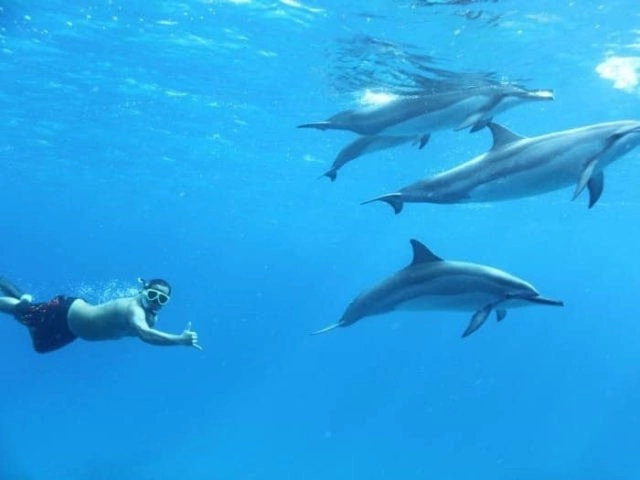
While encounters with sharks and other potentially dangerous marine life are rare, it’s essential to be aware of your surroundings. Avoid wearing shiny jewelry, which can resemble fish scales, and don’t surf near schools of fish or seals. If you spot a shark, remain calm and slowly make your way back to shore.
How Maui Recovery Can Help
Having treated addiction in Hawaii for over 15 years, we’re acutely aware of the power surfing holds. Not only can it help foster community and improve wellbeing, but we’ve witnessed its positive impact on recovery firsthand.
Because of this, Surf Therapy became an essential addition to our treatment plans. By encouraging you to get in touch with your body, reestablish your sense of inner balance, and tap into the magical energies of the Hawaiian coast, surfing has the potential to help you rebuild a fulfilling, healthy life.
If you’d like to talk to us about Surf Therapy, or any of the other experiential therapies we offer, please don’t hesitate to contact us.
